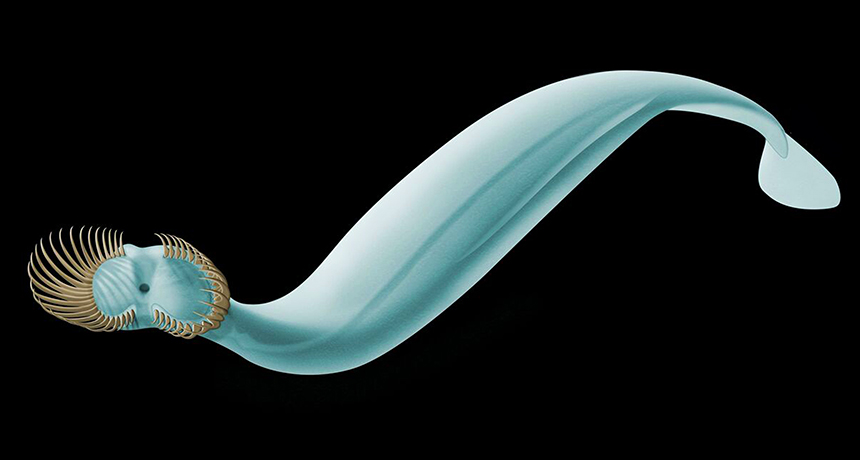This ancient sea worm sported a crowd of ‘claws’ around its mouth

Predatory sea worms just aren’t as spiny as they used to be.
These arrow worms, which make up the phylum Chaetognatha, snatch prey with Wolverine-like claws protruding from around their mouths. Researchers now report that a newly identified species of ancient arrow worm was especially heavily armed. Dubbed Capinatator praetermissus, the predator had about 50 curved head spines, more than twice as many as most of its modern relatives. Arranged in two crescents, the spines could snap shut like a Venus flytrap to catch small invertebrates.
More than 100 species of chaetognaths are alive today, but evidence of their ancient relatives is spotty. C. praetermissus lived a little more than 500 million years ago during the Cambrian Period and was identified from 49 specimens found in the fossil-rich Burgess Shale in British Columbia, the scientists report in the Aug. 21 Current Biology. Often, only arrow worms’ clawlike spines appear in the fossil record, without soft tissue. But many of the new finds had such tissue preserved, which provided clues to body size and shape.
C. praetermissus was different enough from other chaetognaths to be labeled not only a new species, but also a new genus. The animal was at the larger end of the scale for arrow worms: about 10 centimeters from spines to tail. And while today’s arrow worms have teeth to mash up their meal after capturing it, this ancient species appears to have been toothless.
But arrow worm teeth, which are found closer to the mouth, are quite similar to spines, says study coauthor Derek Briggs, a paleontologist at Yale University. Shorter spines seen on some ancient specimens could have functioned somewhat like teeth and might have been an early evolutionary step toward tooth development, Briggs proposes.